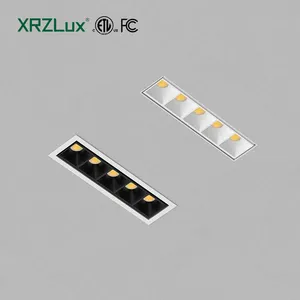
All categories
Featured selections
Trade Assurance
Buyer Central
Help Center
Get the app
Become a supplier

(2050 products available)









































CCFL lamp, abbreviated as cold cathode fluorescent lamp, is one of the fluorescent lighting types manufactured through the use of a narrow tube and mostly used in portable products like backlighting for phones and monitors due to low power consumption and brightness.
It is the most common CCFL type and distinguishes itself through the use of an old-style cold-cathode design. As a result, it is usable over long periods while retaining good lighting performance. It is often applied in large-scale lighting decorations and liquid crystal displays.
The U-Tube CCFL lamp takes the shape of a U-bend tube within which the cold cathode fluorescent illumination functions. Compared to the conventional tube, this lamp is significantly shorter, and it is still possible to achieve great brightness.
It is in a thin strip design so that CCFL may be used in flexible applications. Users of these CCFLs prefer thin and light designs because, in their case, illumination space is an important factor.
This variety of CCFL lamps has ballasts and all other necessary components integrated into them. Easy installation makes the integrated appliances more appealing to end users and many in the housing business.
The design of CCFLs for lamps includes distinctive features that allow their unique functionality, efficiency, and aesthetics. Important design features of a CCFL lamp are discussed below:
The lamp has a narrow tube design, and whereas traditional fluorescent lamps have larger tubular structures, fluorescent tube lights have a significantly smaller diameter. The narrower the diameter, the brighter and focused the light, hence better; thus, these bulbs are mostly applicable in decorative lighting and display backlighting.
There are two electrodes at each end of the tube, and cold cathodes do not require heating, in contrast to hot-cathode fluorescent lamps. Engineering them helps reduce energy requirements while facilitating better insulation.
The CCFL lamp is filled with gas (neon or argon) at low pressure, and when electricity passes through the gas, it creates plasma. Plasma helps produce ultraviolet light that, when converted into visible light, by phosphor coating the inside of the tube, UV light will help activate the gas fill a mixture for better illumination.
The inside of the tube is coated with phosphor material, and fluorescent lamps emit UV light by the gas. The phosphor materials then convert that UV light to visible light, where different phosphor combinations produce different light colors. For example, warm white, cool white, green, etc.
CCFL lamps come in varying sizes to meet the different requirements of their users. In general, longer tubes result in more significant light output, while shorter ones are sufficient for small products like monitors or under-cabinet lights.
CCFL lamps are very useful in different applications due to their effectiveness and versatility. They can be used for different purposes and in various places in daily life.
Cold-cathode fluorescent lamps are significantly employed, especially in the LCD technology displays, as backlighting. The evenness of light displayed and the quality of colors make it ideal for TV, computer monitors, and mobile phone screens. This is out of backlighting, and CCFL provides bright and consistent light, making it easier to view screens in different lighting conditions.
CCFL lamps also serve users well in their decorative lighting, especially in chandeliers and stylish light fixtures. Because of their slender design, these lamps easily fit complex and intricate fixtures. CCFLs also come in different colors, giving creative lighting effects.
CCFL lamps come in handy and are useful for emergency lighting systems and indicator lights on devices. Their low energy consumption allows their use during power outages, making systems like exit signs easier to spot in the dark. In addition, devices such as control panels, dashboards, and appliances indicators use CCFL to give visibility to status indications.
Cold-cathode fluorescent lamps have a wide application in many areas, including industrial and commercial. Because of their long lifespan and low energy consumption, they are favored in factory lighting, warehouse lighting, and work areas. CCFLs are also applicable in photographic lamps and analytical instruments, where consistent, precise illumination is essential.
Specialty lighting is also available for CCFL. These kinds of lamps are used in certain scientific equipment, fluorescent microscopes, and medical imaging devices. The quality of light and great reliability ensure accurate results in sensitive environments.
Proper lamp maintenance for customers is paramount in ensuring that customers enjoy lively and long-lasting CCFL lamps. Some of the maintenance tips are:
A1. A cold-cathode fluorescent lamp (CCFL) is a fluorescent lamp that uses electrodes in the form of a cold cathode, a thin and long tube lamp mostly used in LCD backlighting and other small lighting applications.
A2. Some benefits include narrow design, longer life, easy installation, and even light.
A3. Color temperatures of CCFL range from 2,700 K warm white to 6,500 K cool daylight, thus making them usable for varied applications.
A4. Neon or argon gas fills the tube in CCFL lamps, and these gases become ionized when electricity passes through them, thus producing light.
A5. Avoiding damp, regular cleaning, appropriate installation, and right ballast use will maximize lifespan.